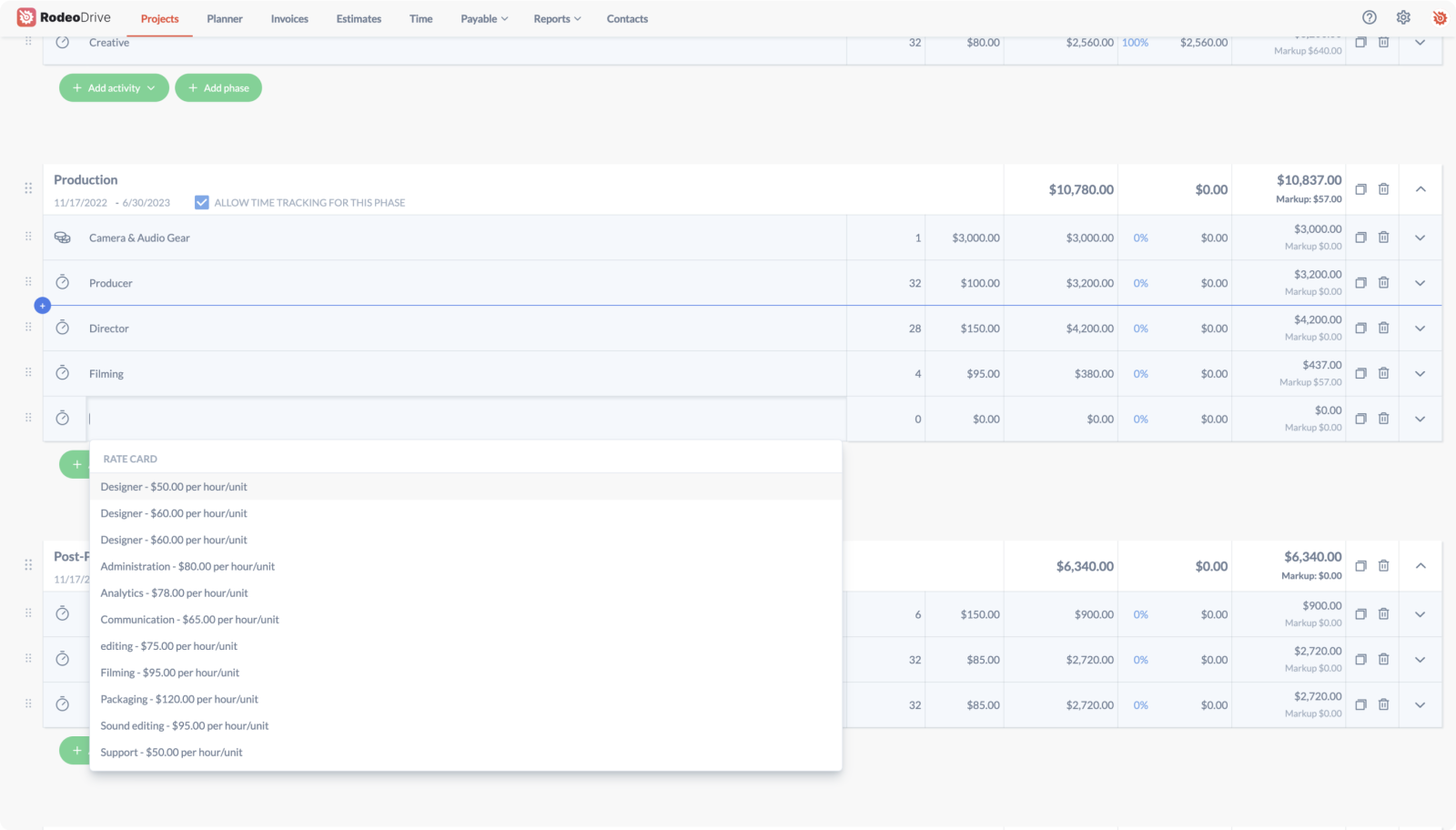The Secret to Successful Cross-Functional Collaboration
Collaboration is key to innovative ideas and better decision-making. Unfortunately, many organizations are structured so that departments operate independently with very little communication and collaboration among them.
This can lead to information getting lost in silos and low employee engagement, ultimately resulting in worse business outcomes.
This is where cross-functional collaboration comes in. As we’ll explain below, successful cross-functional teams include employees from all levels and departments to improve knowledge sharing and ultimately improve team synergy.
Let’s take a closer look.
What is cross-functional collaboration?
Cross-functional collaboration occurs when you bring people from different departments, teams, or seniority levels together to work on a project or toward a common goal.
This is typically necessary for projects with a wide range of objectives. For example, if helping a client launch a new product, you might need developers to work on the new product and marketers to prepare for a successful launch.
You’ll often find that small businesses and startups tend to have cross-team collaboration simply because of their smaller size. While it might feel more natural to these teams, the same strategies, benefits, and best practices apply.
How teams benefit from cross-functional collaboration
Cross-functional collaboration is popular for a reason. Many organizations find that it brings synergy to projects, meaning teams are able to produce better results together than they would’ve working alone in their respective departments.
Not only this, but it’s a great way to boost team engagement levels since people tend to feel more connected to their organization as a whole when they’re collaborating with people in other departments rather than just their team.
Let’s take a look at a handful of other benefits that come with cross-team collaboration.
Enhanced creativity and innovation
Every department has its own objective, rather that’s selling a product or building it. But these objectives can sometimes cause teams to operate in a silo, making them more prone to groupthink and less likely to come up with ideas that challenge the status quo.
Bringing people with diverse perspectives together improves collaboration, which then provides more opportunities for ideas to be bounced off one another. When a new idea arises, cross-functional teams are well-equipped to provide feedback that boosts the quality of the idea.
Also read: How to Increase Creativity in the Workplace: Proven Techniques and Strategies
Improved problem-solving
Communication is one of the most obvious benefits of cross-team collaboration, and with that comes better problem-solving.
A key benefit of cross-functional teams with varying experience levels is that it’s more likely someone has encountered a similar problem before and has experience solving it. Plus, it’s more than likely that everyone will view the problem differently, which paves the way for brainstorming a variety of approaches.

Increased efficiency and productivity
Low employee engagement can be detrimental for a team’s productivity. Fortunately, cross-functional teams are typically better at providing employees with a sense of purpose, since their role is clearly defined and necessary for the success of the team.
It’s important to foster team accountability when leading any team, but a cross-functional team might already have a higher sense of accountability since each team member is bringing their own unique area of expertise to the table.
Better decision-making and resource allocation
Too often, project budgets are created without consulting the right people. This can cause overspending, and make people frustrated in the process.
But when it’s easy to consult the relevant parties on big decisions, you can have more confidence that your decisions are the right ones and that all of your resources are properly allocated.
Provides alignment across departments
Miscommunication tends to occur when departments operate in silos. But with cross-functional collaboration, it’s clear what everyone’s working on and how it contributes to the team’s bigger-picture objectives.
Conflict can arise from departments not feeling like everyone is contributing equally. It’s likely that cross-functional team members will relay information to their own departments as well, which helps unite everyone.
Overcoming challenges in cross-functional collaboration
You might be surprised to learn that 75% of cross-functional teams are dysfunctional, meaning they fail to meet expectations or stay on budget and schedule.
And these aren’t the only challenges you might encounter along the way. Here’s an overview of a few of them and how you can best overcome them.
Communication challenges
Seasoned project managers know how important communication is for project success. According to PMI, one in five projects are unsuccessful due to ineffective communication.
PMI also points out that many projects suffer from language challenges, which happens because project-related information is too often bogged down by unfamiliar project management jargon.
This problem might be particularly exacerbated in cross-functional projects where team members come from varying levels of experience and technical backgrounds.
Overcoming this challenge
Miscommunication often occurs when there’s confusion regarding what each team member is responsible for. The best way to prevent this is by clearly defining roles, workflows, and responsibilities right from the get-go.
To do this, it’s important to select a project leader who is skilled in communication and mitigating conflict. This person might also create a project communication plan so that everyone has a document to turn to, should any questions arise.

Silo mentality and conflicting goals
The silo mentality tends to arise from departments setting their own objectives and goals, which can create conflict when those goals don’t align with other departments.
Sometimes this challenge is made worse by conflicting assumptions that impact how each member of the project team thinks the work should be done.
Overcoming this challenge
The good news is, assembling a cross-functional team is already one of the best things you can do to break down those silos.
But in the event that some of those conflicting goals linger, the project manager should start by addressing those competing interests head-on and decide what should be prioritized according to the long-term goals of the entire team.
If conflicting assumptions are a persistent issue, it might be worthwhile to conduct a brainstorming exercise to see if everyone’s on the same page regarding their foundational beliefs about the project.
Different work styles and cultures
Bringing a group of people together who aren’t used to working together will inevitably have its ups and downs.
If you’re working with a group of experienced project management professionals, they might have different methodologies they’re used to working with, whether that’s agile, Scrum, Kanban, or just a simple waterfall approach.
Each project management methodology comes with its own set of workflows, which can make it a challenge to collaborate with team members who aren’t used to this way of working.
Overcoming this challenge
It’s particularly important for cross-functional project managers to set expectations at the beginning of the project regarding which methods will be used and what will be expected of each team member.
But beyond that, it’s a good idea to implement OKRs, KPIs, or another goal-setting framework that facilitates easy tracking of team progress regardless of preferred work styles. That way, no matter how a team member wants to go about their work, there are clear expectations set.
Timezone and geographical differences
Now that teams are increasingly hybrid or fully remote, it’s likely that you might experience a physical disconnect with team members, whether that’s time zone issues or a lack of an in-person connection.
There’s also no doubt that it takes extra effort to keep connected to team members who are located in other cities, states, or even countries, which can be an added challenge.
Related: 15 Effective Ways to Improve Team Time Management [Remote & In-Person]
Overcoming this challenge
You might find that setting up video meetings rather than simple phone calls are a better way to promote face-to-face contact and get to know each other better. It’s also a good idea to utilize messaging apps like Slack, as this will allow you to quickly communicate and schedule messages ahead of time.
Whenever possible, you should be sure to consider timezones when structuring your workflows. You’ll want to make sure timezone differences are accounted for when creating task dependencies, for instance.
That way, if you need to complete a task that’s dependent on a co-worker completing a different task, you arrange your schedule so their task should is completed by the time you start your day.

Lack of trust
It can be difficult to build trust among cross-functional teams, particularly when there is a history of conflict between departments or certain individuals.
Fostering trust is also more difficult for hybrid or remote teams since there are typically fewer opportunities to develop interpersonal relationships between team members.
At the end of the day though, project leaders must invest significant effort into building this trust, as it’s a crucial component of strong teamwork.
Overcoming this challenge
Team building activities are a great way to help team members connect with one another, as it provides an opportunity for coworkers to get to know one another in a less professional setting. Social events can also help with team building, although geographic distance may make this tricky. Introducing team-building questions into your regular meetings might be another strategy to consider.
If possible, you could also start your team with low-risk collaboration tasks and escalate their assignments from there. That way, they can get used to working together before the stakes are high.

Best practices for implementing cross-functional collaboration
Assembling a successful cross-functional team can be tricky. These teams can be ripe for conflict if improperly managed since people tend to have varying perspectives on how the project should be executed.
Check out three of the top cross-functional collaboration best practices below.
Make sure your team includes the right people
The point of a cross-functional team is that it’s diverse. Not only will you need people with the right skills to help you successfully fulfill your project objectives, but it’s important to evaluate other factors, such as experience level, age, and gender when assembling a team.
While these factors may appear unrelated to your project scope, they are instrumental in facilitating innovation and new ways of thinking.

Set a clear vision
The “what” and “why” of your project should be clear to everyone on your cross-functional team. Because everyone is working on different chunks of the project, it’s imperative that there’s a unifying vision to guide project activities and refer back to during times of uncertainty.
Establish a feedback loop
Constructive criticism can be uncomfortable. That said, it’s a very necessary part of working on a cross-functional team, since team members likely aren’t used to working with one another.
It’s important that the project manager provides opportunities for feedback, whether through an occasional formal review process or via an ongoing system. Try to stress that constructive feedback helps everyone improve and that it isn’t something to be scared of.
5 strategies to foster and promote successful cross-functional collaboration
Perhaps you’re a team leader who’s new to cross-team collaboration, or maybe you’re currently struggling with turning your current cross-functional project into a success. Regardless, here are a few techniques to try:
- Host regular cross-department team meetings: If you’re looking to get started on improving your organization’s cross-team collaboration, a great way to start is with team meetings between departments.
- Overcommunicate when necessary: Before you’ve established a cadence of communication among the team, air on the side of overcommunicating to eliminate any chance of confusion.
- Provide shadowing opportunities: Many people learn best by doing. Allowing team members to shadow their peers can help them gain a better understanding of everyone’s role in the bigger picture.
- Promote knowledge sharing: Knowledge sharing is a crucial part of breaking down information silos. When team members give others access to their information and resources, the team’s collective knowledge expands.
- Use the right project management software tools: It’s almost impossible to tackle projects without a project management or collaboration tool like Rodeo Drive. These tools allow you to see what everyone’s working on at a glance and better manage team capacity.
How Rodeo Drive promotes cross-team collaboration
Team leaders tasked with overseeing cross-functional collaboration often fall into micromanagement, which can have detrimental effects on a team’s creativity and ability to get work done.
Instead, you’ll want to keep an eye on what everyone’s working on without breathing down their necks. The best way to do this is with a robust, all-in-one project management tool like Rodeo Drive.
Rodeo Drive helps project managers see their projects through from initiation to completion, providing them with every feature they need to succeed. This includes budgeting, time tracking, task planning, invoicing, and reporting.

Our goal is to help alleviate the administrative burden of projects by automating some of your financial processes. For instance, your project budgets will update in real time according to the amount of time recorded by your team.

You’ll also be able to monitor everyone’s progress toward their tasks without having to constantly ask for updates. And if new tasks pop up, you can plan them out in your calendar and assign them accordingly. It’s as simple as that.
Why not give it a try? Try for free today.








